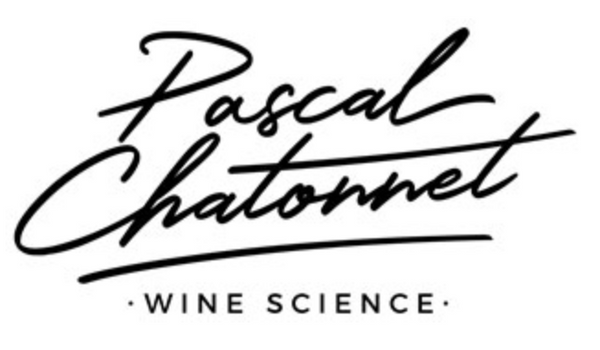-
Rootstocks and our development
Rootstocks form a vital component of viticulture. The grafting of Vitis vinifera onto American roots is the perfect example of biological pest control, which saved vineyards planted with this species worldwide from being lost forever after the phylloxera invasion in the late 19th century. Grape phylloxera (Daktulosphaira vitifoliae) is an insect species in the Hemiptera order belonging to the Phylloxeridae family. It is a grapevine insect pest related to aphids. The invasive neophyte species was brought to Europe from the Eastern United States by botanists and found in France in 1863. In 1869, Victor Pulliat created the Société Régionale de Viticulture de Lyon (Lyon regional winegrowing society) and organised conferences and courses to advocate for the grafting of vines onto resistant American rootstocks to regenerate the French vines attacked by phylloxera. We now live with phylloxera, which has infested almost all soil types, except sandy soils and areas that are naturally protected by their geographical isolation (islands) or by strict sanitary barriers (Chile, Australia).

https://en.wikipedia.org/wiki/Phylloxera
Non-grafted vines are now back and being touted for their more authentic taste compared to that of grafted vines, without providing any objective and conclusive proof as yet. This interesting approach unfortunately remains completely confined to a specific soil type, which is not common on our land. They require sandy soil with less than 4% clay. In other words, the beach (a slight exaggeration, I admit).
The Troquard plot in Saint-Emilion, which produces our Archange vintage, is planted on soil that is very sandy on the surface, atop a deeper layer of blue clay molasse. It will be interesting one day to explore the possibility of replanting alternatives, perhaps 20 to 30 years from now.
There is no doubt that rootstocks impact the expression of V.vinifera onto which they are grafted. Various interpretations have been offered (disturbance of the sap flow at the location of the grafting callus, rhizospheric microbiota modified by different root exudates that in turn alter the assimilation of micro and macroelements in the soil, a different phyto-hormonal balance that increases the vine’s vigour). This undoubtedly explains why grafting benefited Merlot which, before phylloxera, was not very common in Bordeaux because it struggled to become fertilised and its root system was not always well-suited to the local soil. The graft greatly improved its pollination and fruiting capacity thanks to increased sugar generated by sap retention on the graft. The variety then spread rapidly, to the detriment of Malbec, which had been extremely popular up until then, because it had become sensitive to shot berries and grey rot due to its excessive vigour, caused by the same reasons.
However, grafting still seems to be a very smart biological pest control solution. But the choice must be made after much careful reflection, or you will run the risk of paying the consequences with years of poor adaptation. We have therefore significantly changed our practices with respect to rootstocks over the past thirty years. After the frost of 1956 and the intensive replanting that followed, vine nursery owners, starting with my maternal grandfather, urged winegrowers to replant on relatively vigorous roots with significant regrowth from the grafting. Rootstocks 5BB and SO4 flourished in Bordeaux, but their union with our varieties often proved disastrous. These vines that were urgently replanted did not last long and, starting in the 1970s, we took the opposite approach by replanting on rootstocks of much higher quality because they were less vigorous, with much less Vitis berlandieri and rupestris and more V. riparia. The choice of available rootstocks still remains quite limited and few new creations have emerged. We must choose the rootstocks for our vines based on
D’Amico F, Candela M, Turroni S,Biagi E, Brigidi P, Bega A, Vancini Dand Rampelli S (2018) The Rootstock Regulates Microbiome Diversity in Root and Rhizosphere Compartments of Vitis vinifera Cultivar Lambrusco. Front. Microbiol. 9:2240.
Root-associated bacteria promote grapevine growth: from the laboratory to the field Eleonora Rolli & RamonaMarasco & Stefano Saderi & Erika Corretto & Francesca Mapelli & Ameur Cherif & Sara Borin & Leonardo Valenti & Claudia Sorlini & Daniele Daffonchio Plant Soil (2017) 410:369–382 DOI 10.1007/s11104-016-3019-6
the local soil characteristics and the intended grape variety. We no longer plant a single rootstock in a plot, but possibly several, depending on the physical characteristics of each part of its soil; certain soil types are homogeneous, whereas others are not, and we characterise them carefully in order to optimise their adaptation before they are planted.
Until only recently, we always favoured weak rootstocks, such as Riparia Gloire de Montpellier (RGM). However, in recent years, heavy rainfall in spring and, above all, recurring summer droughts, which had previously been the exception, has led us to seek more efficient roots that can absorb the water in summer while also withstanding excess temporary humid conditions at the start of the season (the most common are 101-14 MG,3 309-C, Gravesac, but we sometimes are sorry that we cannot obtain 196-17 Castel, which possesses excellent properties in the long term on some of our soil types, but is almost never produced any more).

